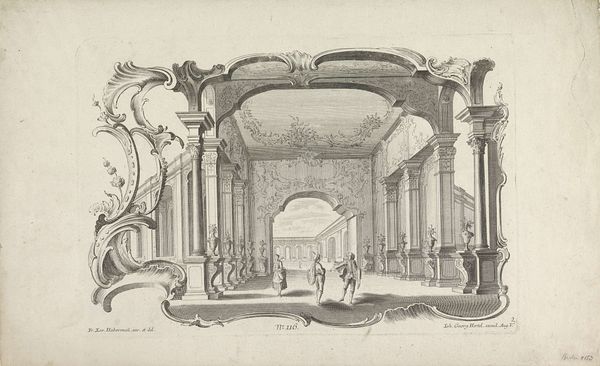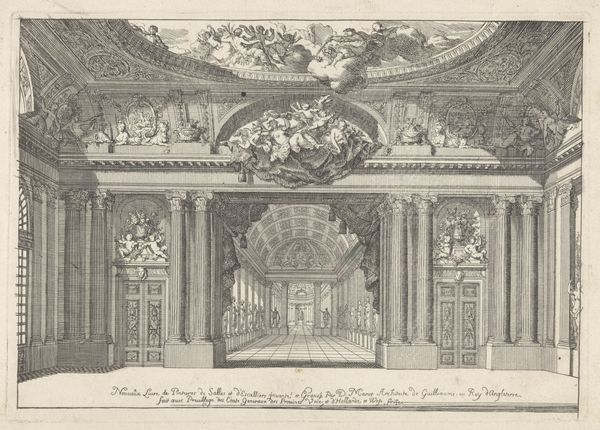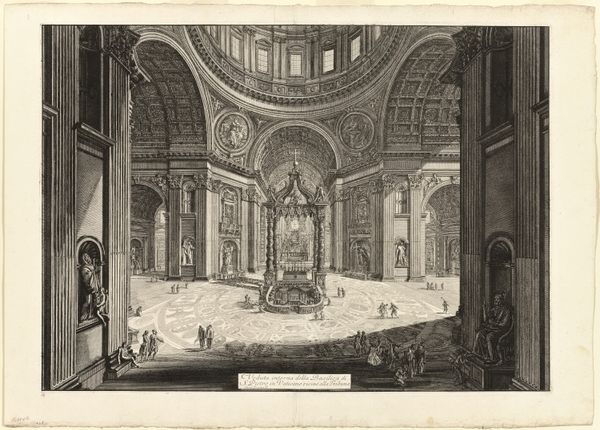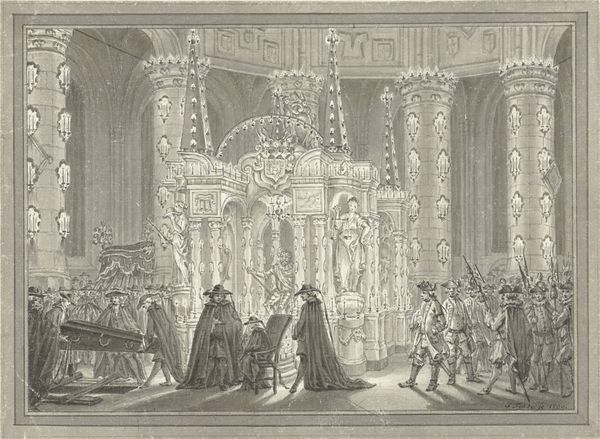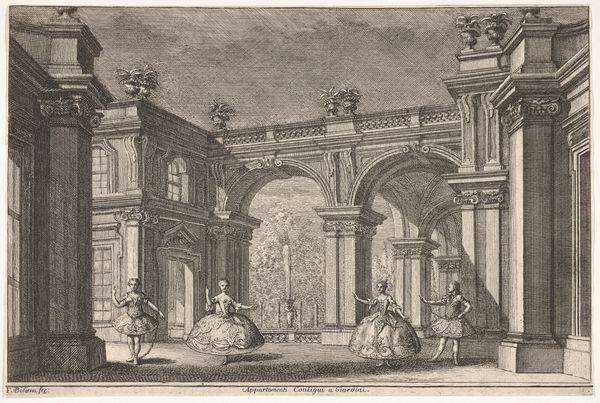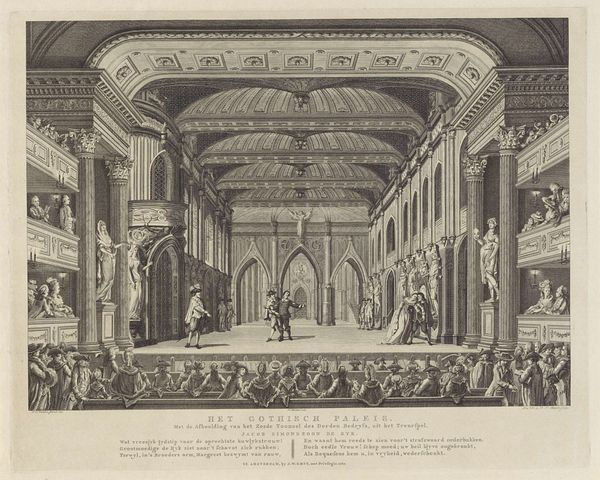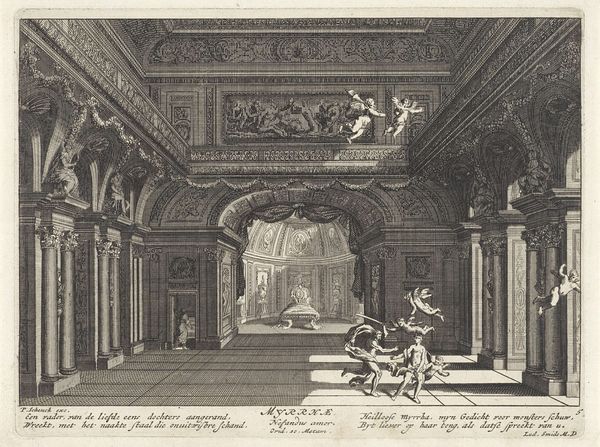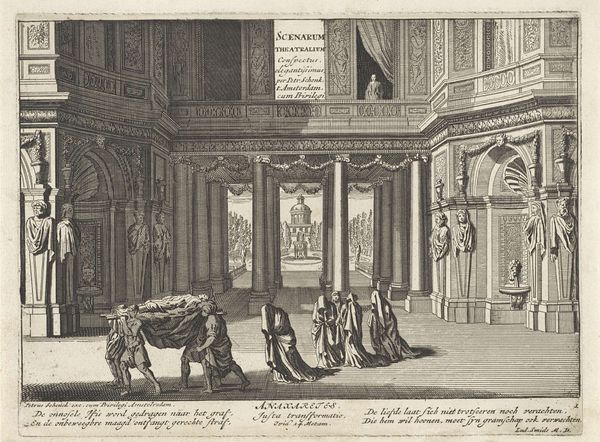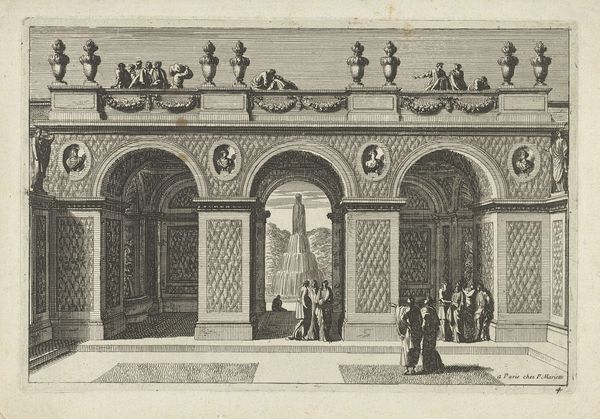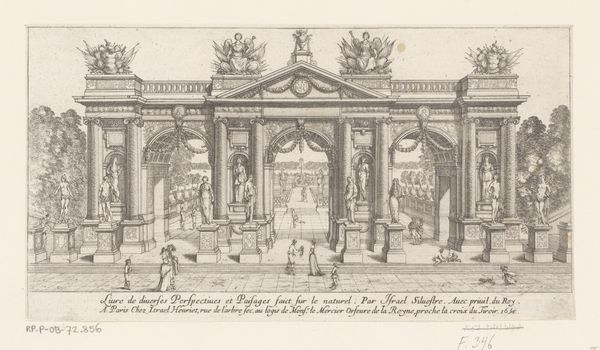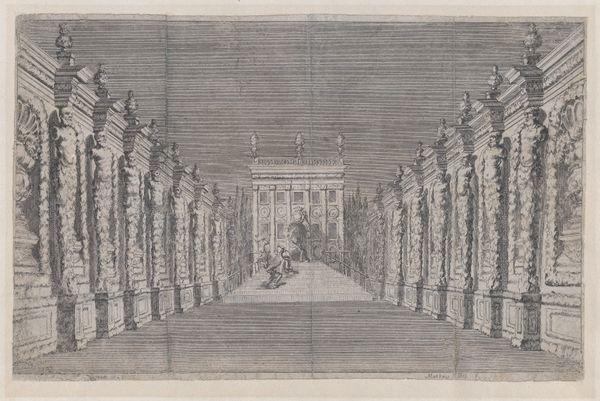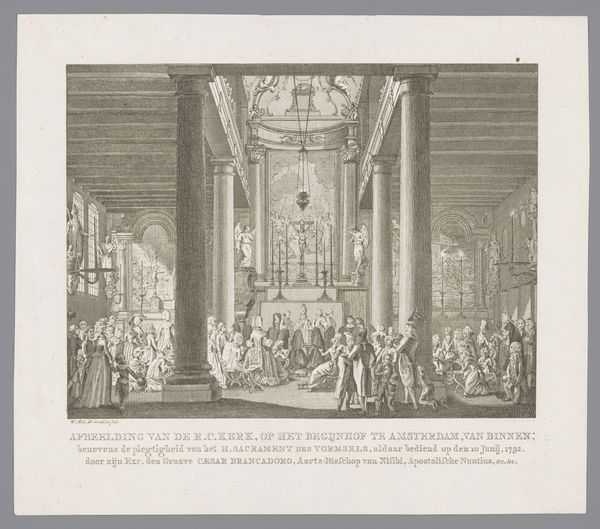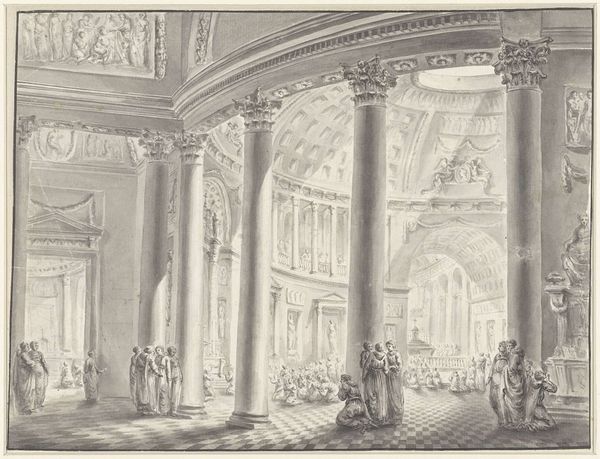
print, engraving, architecture
#
baroque
# print
#
cityscape
#
engraving
#
architecture
Dimensions: height 162 mm, width 203 mm
Copyright: Rijks Museum: Open Domain
Editor: So, this is Hendrik de Leth's "Colonnade in de tuin van Huis ter Meer te Maarssen," made around 1740. It's an engraving, quite detailed, and creates this sense of theatrical grandeur. I'm struck by the almost artificial nature of the scene. How do you interpret this work? Curator: It's fascinating, isn't it? We must view this engraving as more than a simple depiction of a garden feature. It embodies the Dutch elite's aspirations in the 18th century. The formal garden and architecture deliberately evoke the baroque style as employed to convey power and sophistication. Note how the human figures are arranged within this colonnade. Editor: They seem almost like actors on a stage. Curator: Precisely! Consider the performative nature of social life at the time. Gardens became settings where status was displayed and reinforced. This print, therefore, doesn't just depict a colonnade; it documents the staged performance of social power, where elements of class and wealth are clearly delineated within this private domain. Editor: So, it’s a record of social and class relations through its imagery of landscape? Curator: Yes, but it is also propaganda. It subtly conveys messages of dominance, sophistication and refined tastes, all of which served the interests of the ruling classes by promoting cultural standards that are unattainable to some, while completely excluding others. Consider the racial implications: Who benefits from all of this grandeur? Editor: That perspective really reframes how I see it. I was focused on the artistic style, but now I understand it's equally a statement about society and power. Curator: Indeed. Art and social structures have always been intertwined. Understanding this allows us to critically examine the role art played and continues to play in shaping our world.
Comments
No comments
Be the first to comment and join the conversation on the ultimate creative platform.
